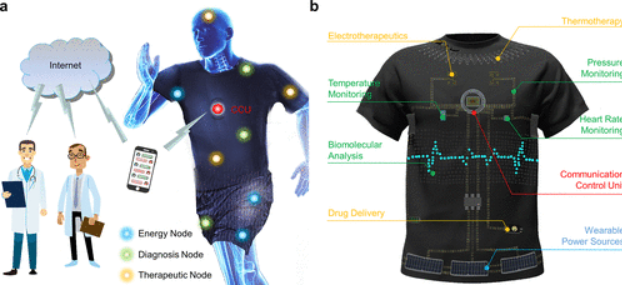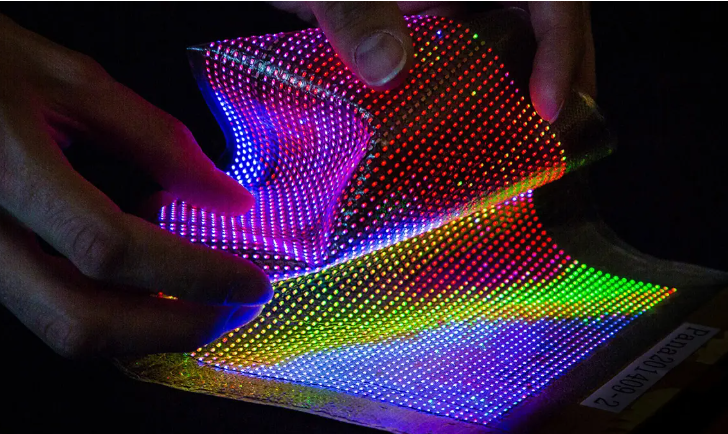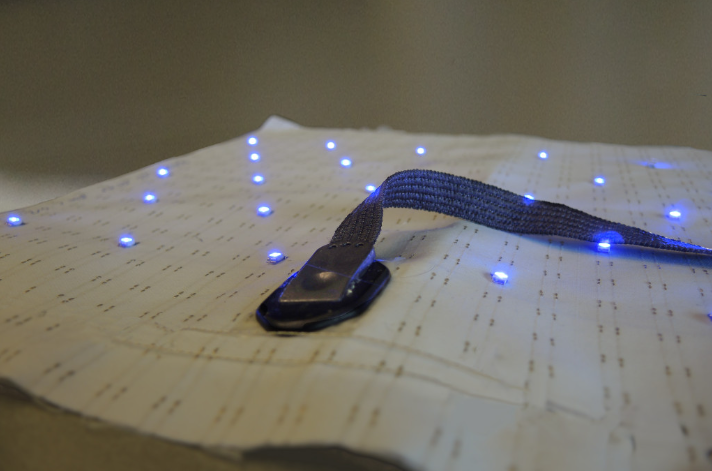E-Textiles: We describe here about according to Electronic textiles, e-textiles examples, what are e-textiles & e-textiles clothing. People also interested about to know e-textiles market and also thinking to e-textiles financials. Many people asked to google which is best e-textiles fashion.
E-Textiles: Electronic textiles, often abbreviated as e-textiles, are an innovative merger of electronics and textiles, creating fabrics capable of conducting electricity and interacting with their environment. These cutting-edge textiles mark an evolutionary leap in the world of smart materials, transforming traditional fabrics into intelligent interfaces.
With their origins rooted in the technology and textile sectors, e-textiles fuse fibers with circuitry, allowing for physical flexibility and a reduced form factor. The embedded electronic components enable e-textiles to respond to environmental changes, emitting light, sound, and even radio waves, extending their utility far beyond conventional textiles.
From daily wear to specialized scenarios like healthcare and athletic performance monitoring, e-textiles have a broad spectrum of applications. They offer the potential to revolutionize wearable technology by embedding computational and sensing capabilities directly into fabrics, making the technology nearly imperceptible while delivering new levels of comfort and convenience.
Decoding E-Textiles
The Fundamentals of Electronic Textiles E-Textiles are fabrics ingeniously embedded with electrical components, thereby enabling electrical conductivity and facilitating the incorporation of various technologies. These textiles seamlessly blend electronics and interactivity into the fabric, making them physically flexible and compact. Equipped with electronic components, these textiles can respond to environmental changes by emitting light, producing sound, and even generating radio waves.

E-textiles have the potential to revolutionize everyday wear as they can replace traditional wearable computers in situations where the latter would be inconvenient. They provide a competitive edge with their impressive power conservation and context-awareness capabilities, swiftly adapting to the computing and sensing requirements of different applications.
Read Also: Best Material Brand for Nonwoven Factory
The Production of E-Textiles
From Laminates to Embedding The production of E-textiles can involve two main techniques: embedding and laminating, each offering unique benefits. “Embedded E-textiles” integrate the circuitry directly into the fabric. You can also create conductive textiles by printing a conductive path directly onto the fabric, making textiles the primary driver of this industry.

On the other hand, laminated E-textiles involve the process of printing or creating circuitry on a non-textile base, which is then attached to the fabric. This technique makes the industry more of a subset of electronics than textiles.
The Dichotomy of E-Textiles

Embedded and Interwoven Electronics E-Textiles can be broadly classified into two categories. The first includes textiles with traditional electrical components embedded within, such as wires, integrated circuits, light-emitting diodes (LEDs), and standard batteries. The second category is more advanced, integrating electronics into the textile fibers themselves and may comprise active components like transistors, semiconductors, and solar cells.
Benefits of E-Textiles
Flexible, Lightweight, and Discreet E-textiles offer a host of benefits: they make sensors and computing devices more flexible, lightweight, and comfortable to wear. The integrated circuitry can be nearly imperceptible, affording the wearer a level of discretion. Given that most embedded circuits are about as thin as paper, wearers need not worry about managing bulky cables or wires.

The high resilience of fabrics to compression and impact damage lends greater durability and flexibility to the integrated circuits. Moreover, E-textiles can exhibit “intelligent” features or leverage the computational power of a smartphone through connectivity.
Market Demand for E-Textiles
A Growing Industry Market analysts project that the e-textile industry will expand at a CAGR of 30.4 percent from 2017 to 2025. Consumption of Passive, Active, and Ultra-smart e-textiles saw a significant surge from 2011-2015 to 2015-2020 and is expected to continue its upward trajectory through 2020-2025. However, the high manufacturing costs associated with naturally sourced textile materials that don’t conduct electricity present a challenge.

As a result, traditional metals and alloys offer much superior conductivity at a lower cost, although carbon fibers have gained importance in recent years. With the increasing demand for wearable technology and the desire for seamless integration into everyday life, the market for e-textiles is poised for significant growth in the coming years.
Read Also: Different Types of Georgette fabric: Everything You Should Know
Exploring Applications of E-Textiles
Beyond the Horizon The application of e-textiles spans a broad spectrum. In the clothing industry, imagine a shirt that continually monitors the wearer’s heart rate during exercise and syncs the data with a mobile application. In the healthcare sector, e-textiles pave the way for compact, lightweight, and stylish wearable medical devices that monitor critical health parameters and send alerts to a medical team.

Manufacturers can leverage e-textiles to create new product categories that collect and transmit data, interacting with the wearer or a third party. E-textiles also enable the creation of interactive displays and touch-sensitive surfaces. With their ability to blend technology with textiles, e-textiles offer limitless possibilities for innovative and functional designs in the future.
Read Also: What is Voile Fabric: Everything You Should
Conclusion
The Future of Textiles E-textiles or electronic textiles represent a paradigm shift in the textile industry, combining textile substrates with built-in sensing capabilities. They can incorporate digital components like mini computers and electronic devices, and are increasingly being used across various sectors. In the coming years, e-textiles promise to transform the way we interact with our environment and the manner in which technology integrates with our daily lives.
Read also: click here

